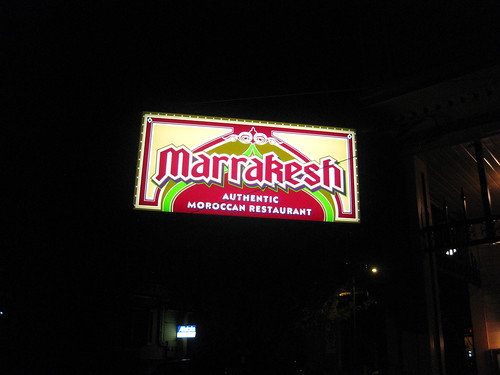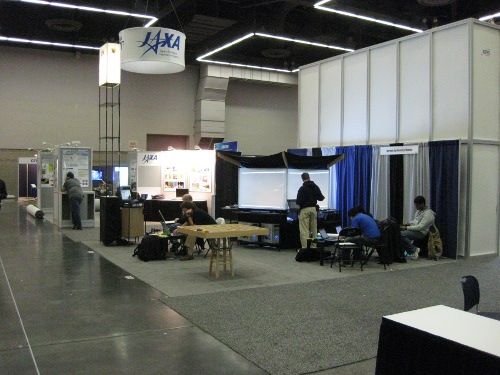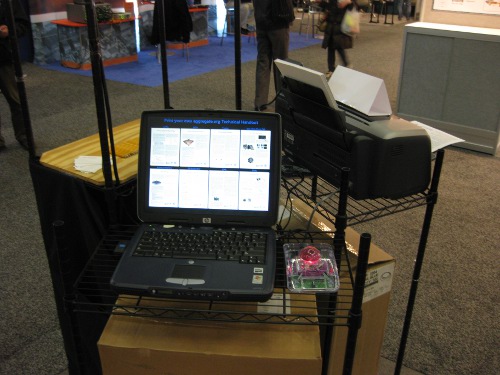I failed to blog interesting things from SC09 in real time, so here’s a dump of the things that should have gone up in pieces from the show floor. Some of these are just quick shout-outs for particularly good or bad exhibits, some actually have thinking behind them:
*The dominant message from supercomputing this year is “Everyone wants GPUs. No one knows why.” Even the ISVs are pretty honest about this phenomena, but the feeling seems to be that at around 10% of node cost (according to two different vendors), organizations who are buying really big pieces of hardware feel like the expenditure is a worthy experiment even if they are nigh impossible to utilize now.
* The Hank v. Nvidia rep “discussion” (which is apparently becoming an annual phenomenon) was good enough to draw a small audience.
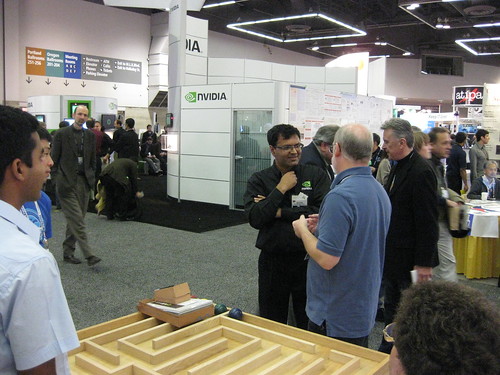
This year’s opener was an attempt to get the MOG stuff published on a new nvidia-sponsored content aggregator (like gpgpu.org, but without the neutral perspective), so they can claim to be involved if/when it takes off, even though they have been entirely unhelpful with the research. As you may imagine, this didn’t go over well. On the upshot, they DO seem much more willing to admit their programming model is crap, and seem to be sniffing around for alternatives (which included shooting job offers for toolchain developers into our booth).
* The award for shittiest booth goes to the Windows HPC Consortium.
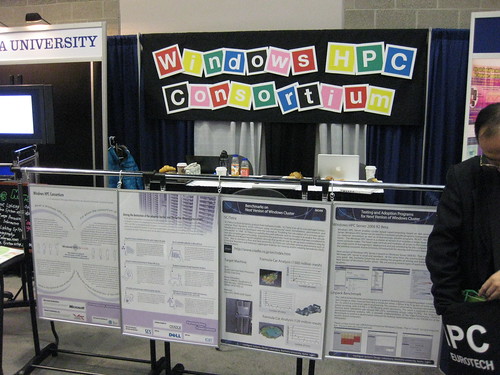
Microsoft themselves had the largest booth on the show floor, replete with blue carpet, vacuous cloud-motif hangings, a flight simulator, booth babes (and dudes) dressed up in pilot outfits, aviator shade schwag, and almost no technical content. Their users got a booth that looks like it was assembled by a deficient kindergarten teacher with a budget that wouldn’t cover lunch. Way to show contempt for your users, Microsoft.
* Green Revolution Cooling have an idea which is either brilliant, or absolutely moronic. They have extended and refined the old tweaker trick of sticking a whole system into a vat of mineral oil up to whole NEMA racks. The current arrangement has all the visual appeal of an industrial size deep fryer, with which it probably shares a lot of lineage:
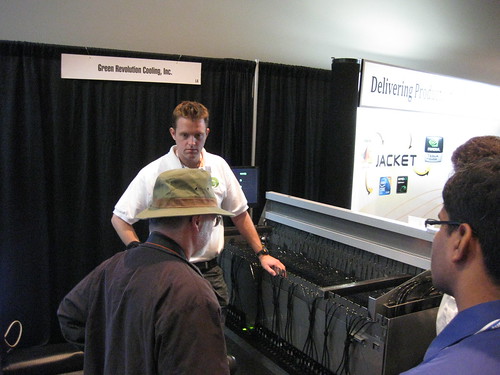
Come on guys, some LEDs and translucent plastic to hide the ugly would go a long, long way. IF they can get around the issues of mess (even with low vapor pressure, between evaporation and splashes the oil will get EVERYWHERE), capillary wicking (a perennial favorite in DIY liquid immersion cooling solutions), service issues (most vendors won’t be real happy about an RMA box dripping with mineral oil, and getting it off will involve a hell of a lot of solvents to have in a computer), the benefits should be great. Quieter, lower power cooling (no fans or blowers), no condensation concerns, easy to reclaim heat, and the opportunity for denser, cooler systems (thanks to the vastly higher heat capacity of oil). There is actually a little bit of consideration about trying a small installation in the new Marksbury Building, since it will fit nicely with the blustery green BS surrounding the building (and hopefully attract vendor testing hardware.)
* The Cray CX1 and SGI Octane III are both adorable little desk-side supers. At a base price near $10k for each, they better kiss your toes while they’re down there though. The Cray is definitely cuter in person, the SGI box just looks like a miniature NEMA rack. There were plenty of examples of each tucked around the show floor…which is probably the only place on earth that can claim that.
* FPGAs are still floating around in the margins. Pico Computing (one of our neighbors on the exhibit floor) is making some some really attractive little FPGA boards, at surprisingly reasonable prices (entry cost ~$400). Most of the FPGA vendors on the floor were at least one and usually two orders of magnitude higher. Digilent (who made both the little Spartan 3 board I have, and the Vertex2 board being used to prototype LARs ) used to be pretty much the only show in town at the entry level. Digilent still seems cheaper per gate, but Pico’s form factors and interfaces look better for computing applications (and are just plain cuter). Some of the other FPGA products on the floor were just monstrous(That thing probably costs more than my entire college education). I’m a little dubious about FPGA-based accelerators (Convey, has the only convincing boards that actually do computation I am aware of; some other vendors have FPGAs doing useful work in the network mesh), but they sure are cool prototyping platforms. As a side note, one of the handful of good technical conversations I had was with a compilers guy from Convey.
I threw up some of my pictures from the trip in a flickr stream for those who are interested.


